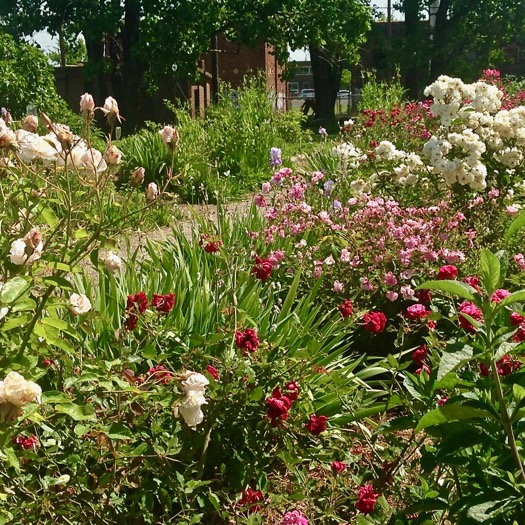Weeds and World Problems in the May Garden
 Sunday, May 27, 2018 at 5:30PM
Sunday, May 27, 2018 at 5:30PM An established moss path is low maintenance, but it does need to be kept free of leaves and debris, and it needs to weeded once in a while. Weeding my moss paths in the woodland garden is a mindless, repetitive chore, and I enjoy doing it.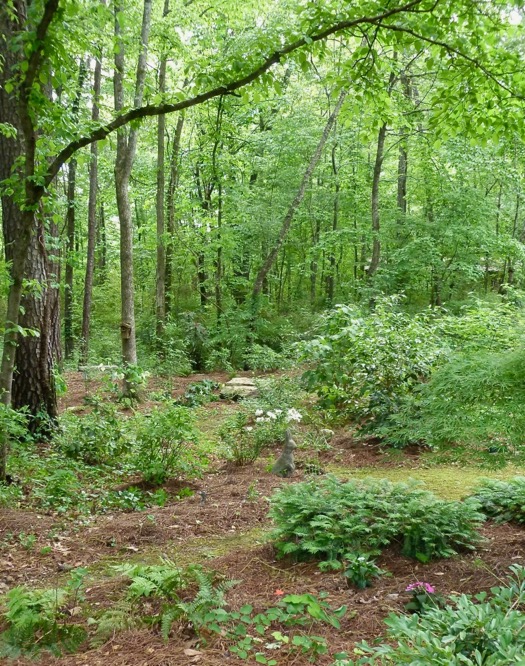 An overview of the May woodland garden
An overview of the May woodland garden
I use a thick old canoe cushion to protect my knees while kneeling, and I take my time. I like to do this after a rain because weeds come up more easily. I use several types of weeding tools, depending on the weed. One of my favorites is a fishtail weeder that is perfect for popping small weeds out of the paths and for getting up the tap roots of plants like dandelions.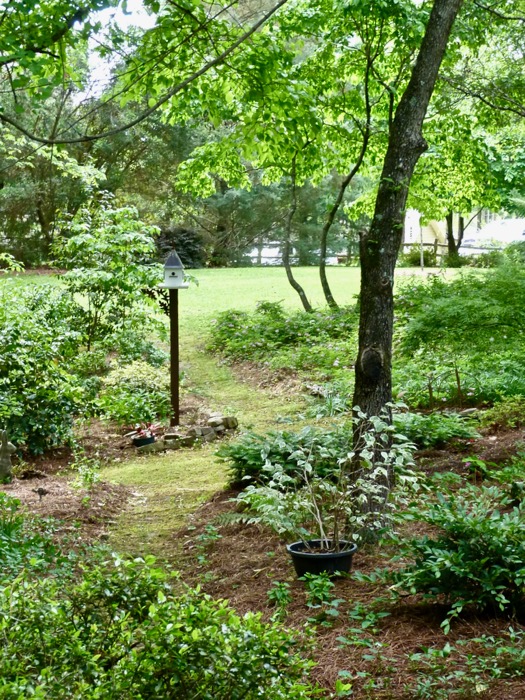 The main moss path in the woodland garden
The main moss path in the woodland garden
When I am weeding I let my mind drift. I listen to the birds. I make a mental list of other needed chores and plan future projects for the garden. I think about people I know, and in general I mentally solve the problems of the world as one weed after another succumbs to my efforts. If only world problems could be so easily eliminated. World problems do, after all, have some resemblance to weeds. A favorite view of the little bridge in the woodland garden
A favorite view of the little bridge in the woodland garden
Summer arrived this month, and the air is thick and warm and laden with moisture. The woodland garden is a deep green retreat from the hot glare of the sun. Early morning and late afternoon are the best times to enjoy sun rays that filter through the canopy. We have had plenty of rain this past week, and often the light sparks off leaves still wet with raindrops. I can almost imagine myself walking in a primordial paradise, except for the weeds, which quickly bring me back to reality.
More views around the garden this month: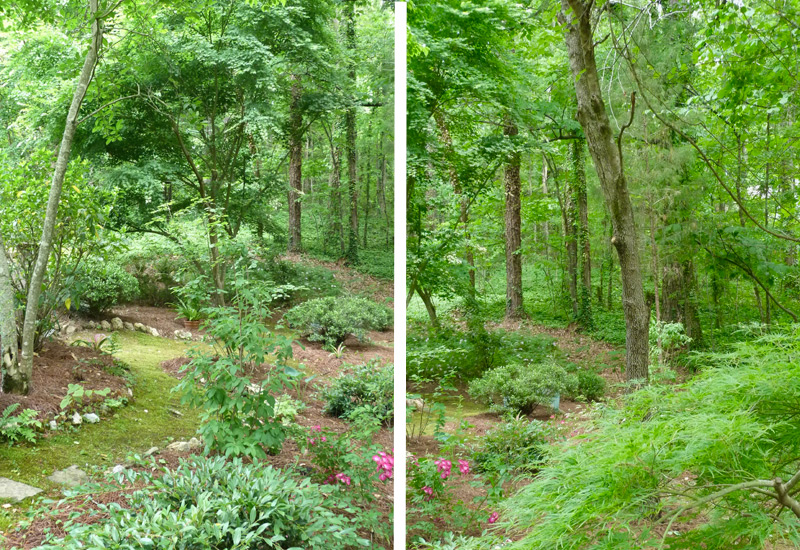

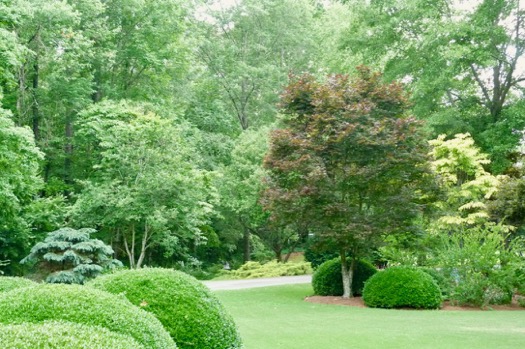 Here is a view across the front lawn.The woodland garden is in the small valley on the far side of the drive.
Here is a view across the front lawn.The woodland garden is in the small valley on the far side of the drive.
 Views of the front garden
Views of the front garden
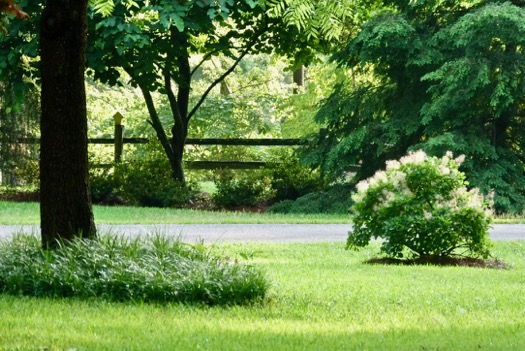 A view across the lower front lawn near the entrance to our propertyA tropical storm is headed our way in the next day or so. Lots of rain, and more weeds coming!
A view across the lower front lawn near the entrance to our propertyA tropical storm is headed our way in the next day or so. Lots of rain, and more weeds coming!
Happy gardening to you; and, while we can't solve all the world's problems, may we each do whatever we can in our little corner of the world to make the world a better place. Deb




